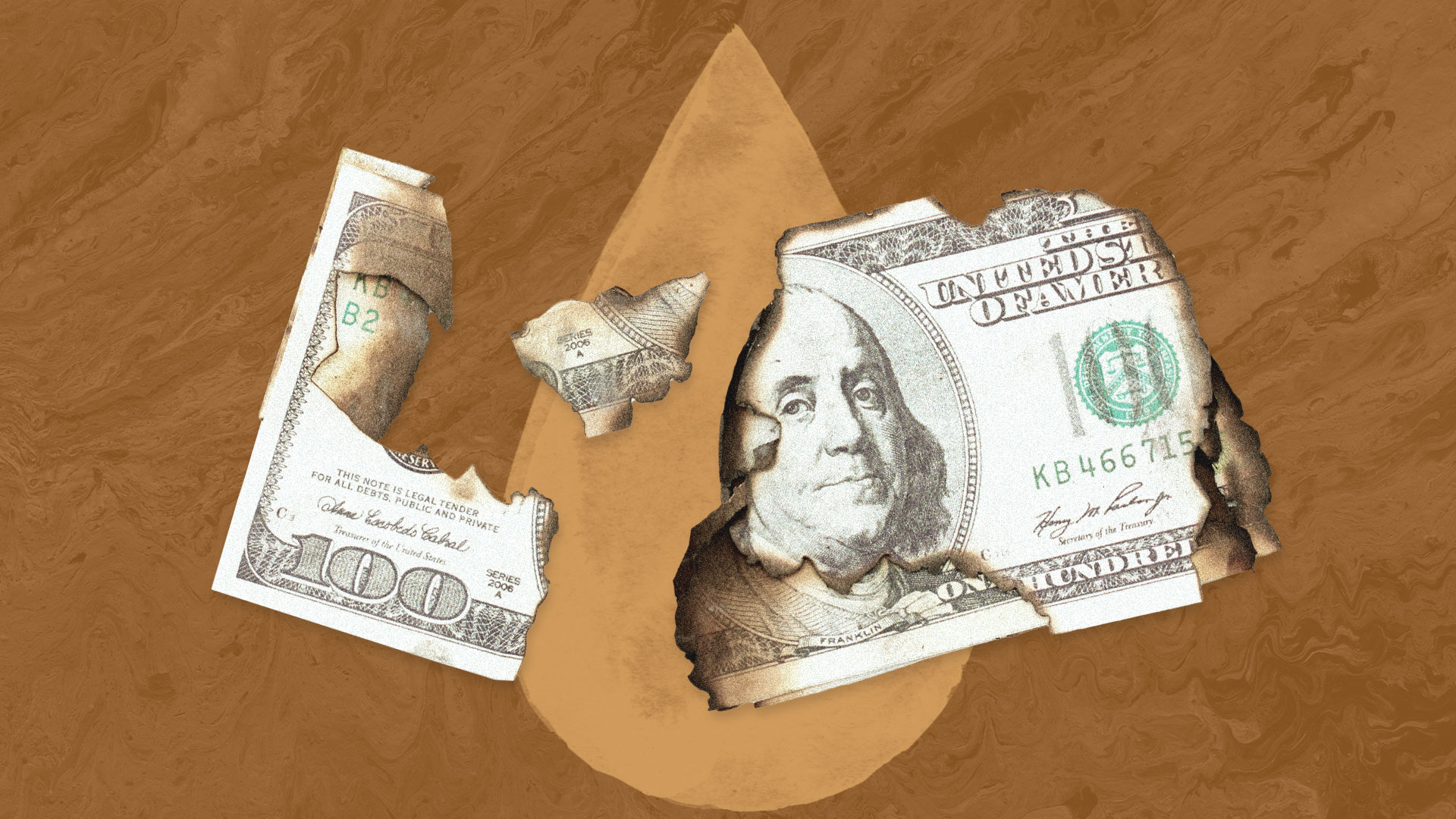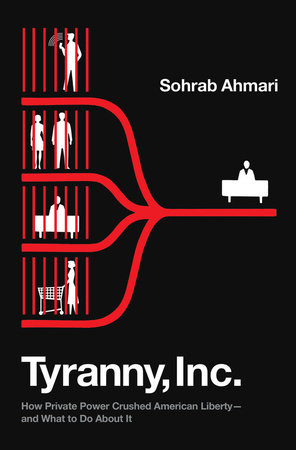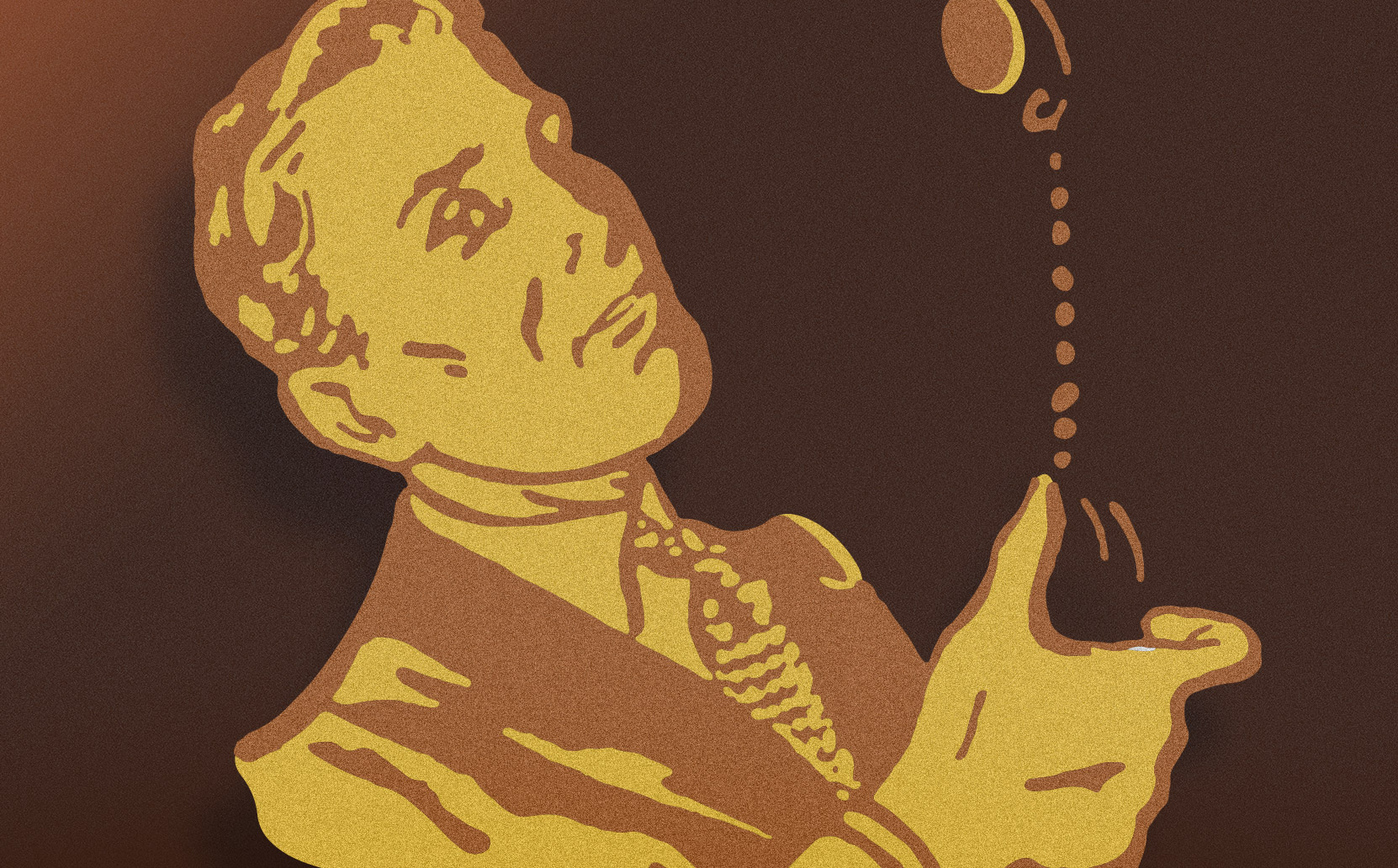

Surveying the wreckage from Wall Street's collision with emergency services
Recommended Reading
In August 2013, Justin and Kasia Purcell learned that their mobile home in Surprise, Arizona, was on fire. The couple, preparing for the birth of a child, was staying with relatives 45 minutes away. By the time they returned to Surprise, a city in Maricopa County 30 miles northwest of Phoenix, firefighters were putting out the last of the flames.
The Purcells’ trailer was almost completely destroyed. And as if that weren’t gut-wrenching enough, two weeks later they received a surprise bill for $19,825 from a private firefighting firm that they hadn’t called, that had shown up long after the local fire department, and that had barely done anything to help.
The invoice came courtesy of Rural/Metro, a Scottsdale-headquartered firefighting and emergency-services company. Days earlier, the firm had filed for Chapter 11 bankruptcy, following a period of ownership by Warburg Pincus, a Manhattan private equity fund.
The family thus joined the growing ranks of Americans who thought of firefighting and ambulances as public goods, only to get a rude awakening when Big Finance came collecting. In the Purcells’ case, the local fire department made it to the scene in 13 minutes, while Rural/Metro didn’t get there until nearly an hour after the flames started. With the bulk of the work already done by the local department, most of the Rural/Metro firefighters were “standing around bullshitting,” Justin recalled.
The family thus joined the growing ranks of Americans who thought of firefighting and ambulances as public goods, only to get a rude awakening when Big Finance came collecting.
A spokesman claimed the company had a contract with the local department to “provide overhaul and do essentially the mop up” after a fire is put out. Pressed to show this contract, the spokesman said, “We do have what I call a gentleman’s agreement.”
The Purcells had punctually paid their fire-district assistance tax, but that levy didn’t cover Rural/Metro’s services. Rural/Metro blamed the family for failing to pay for the company’s fire subscription plan, which cost $474 annually. Said the spokesman, “They, along with others across Arizona, in areas we serve, elected to . . . roll the dice that they would not have a fire—they lost. We provided service to them and now they are mad. This is not new. We bill for unsubscribed fires all of the time.”
Rural/Metro did have a real contract with the local fire district, apparently, but the Purcells and other families reported they had never seen an offer to subscribe to Rural/Metro’s protection plan—most likely because, as the firm conceded, it hadn’t marketed its plans in that area. As sketchy as all this sounds, Rural/Metro insisted it had provided a “service,” for which it was entitled to payment. Poor and lacking legal sophistication, the Purcells turned to crowdfunding to deal with their expenses.
The story is symptomatic of an even more sinister development: the tendency of public pensions to invest their contributors’ retirement money in Wall Street funds engaged in privatizing those very contributors’ jobs.
The family’s story is about more than one emergency-services firm’s notoriously underhanded billing tactics or the transformation of once-public services into luxury products. As we will also see, the story is symptomatic of an even more sinister development: the tendency of public pensions to invest their contributors’ retirement money in Wall Street funds engaged in privatizing those very contributors’ jobs.
These investments can be known to anyone willing to pore over the soporific annual reports of state and local pensions. Yet very few public servants are aware that each time they contribute to their retirement plans, they are marginally helping to eliminate their own jobs—or at least to strengthen predatory competitors like Rural/Metro.
Heroes No More
The aggressive push to privatize the firefighting and emergency services relied upon by ordinary Americans began in the aftermath of the Great Recession. The recession pinched state and local budgets and led some Americans to direct their “anti-elite” ire against government employees and their pensions (rather than, say, Wall Street), lending privateers a golden chance.
Private equity seized that opening. In April 2011, for example, Warburg Pincus acquired Rural/Metro, with its then 8,000 employees, for $438 million excluding debt. All told, at least a dozen ambulance companies were acquired by private equity over the past two decades. A quarter of those went on to file for bankruptcy. Meanwhile, of some 1,100 traditionally owned firms in the industry, none went into bankruptcy—a disparity that starkly underscores how ownership by private equity dramatically increases the likelihood of a firm’s becoming insolvent.
Wall Street wasn’t interested in properly investing in these firms, or helping them grow in the old-fashioned capitalist way. Instead, as a 2016 New York Times exposé concluded, Big Finance turned to its signature “moneymaking playbook: a mix of cost cuts, price increases, lobbying and litigation.”
Warburg’s ownership was illustrative. For starters, the fund levered up Rural/Metro in typical private equity style, leaning heavily on debt to finance its acquisition and adding $500 million to the company’s liabilities at the outset. At first, Warburg did plow some money into the firm and its assets, but it also pushed Rural/Metro to buy out a pair of smaller rivals, compounding debt upon debt and soon necessitating cutbacks.
Faced with these difficulties, Warburg spurned investing in its service and other traditional methods for turning around a struggling firm. Instead, it doubled down on savage billing tactics of the kind meted out to the Purcell family. Under the Warburg regime, for example, Rural/Metro mailed a $761 bill to a baby born in one of its ambulances, warning the newborn in a letter that the “matter may be reported to a national credit reporting agency.”
Posters plastered at Rural/Metro ambulance stations showed a cartoon first responder encouraging his colleagues to always get a signature to ensure subsequent billing: “Almost always, if the patient is alert, they will be able to sign.”
Posters plastered at Rural/Metro ambulance stations showed a cartoon first responder encouraging his colleagues to always get a signature to ensure subsequent billing: “Almost always, if the patient is alert, they will be able to sign.” And if not the patient, then family members will sign, “because,” as the cartoon EMT declares, “I don’t give up.” The campaign was called “Do the Write Thing.”
Real EMTs complained that this obsession with billing got in the way of their saving lives just when time was of the essence. But for Rural/Metro, billing and then collecting, including by suing the family members of deceased patients, remained a top priority. Public ambulances, by contrast, generally don’t sue patients. Yet with roughly a quarter of ambulance services now in for-profit hands, and medical emergencies being by nature unpredictable, Americans don’t necessarily get a choice between public and private when their lives are on the line. Many low-income people dread having to call 911 at all.
Private firefighters cover a comparatively smaller share of Americans, roughly 4% of the population, mostly in rural and unincorporated areas. Many have surprise-billing horror stories like the Purcells’. A Knoxville, Tennessee, family who suffered a chimney fire in 2013, for example, had Rural/Metro place a $15,000 lien against their title—this, even though the privateers arrived an hour after the 911 call. The same year, Rural/Metro took another Arizona family to court for a $7,000 bill related to a mobile-home fire. To pay off the Rural/Metro debt, they switched to eating two, rather than three, meals a day.
Catastrophic Erosion
Wall Street-led erosion of the first-responder industry has especially grave consequences, because the quality of firefighting and ambulances is a matter of life and death and because taxpayers end up on the hook for these firms’ billing misdeeds through Medicare and Medicaid.
For one thing, underinvestment inevitably causes delays when time is of the essence. Analyzing publicly available information regarding five of Rural/Metro’s major ambulance markets, the Times found that “services in four areas suffered under private equity ownership.”
Wall Street tightfistedness also results in chronic drug shortages, fostering an atmosphere of desperation among emergency workers. The Drug Enforcement Administration, for example, launched a probe in 2012 into Rural/Metro’s Kentucky operation after 20 vials of morphine were replaced with saline solution in company ambulances.
Plus, when Wall Street-dominated firms fail to pay their workers, performance crises follow. For example, when an 81-year-old resident of Loudon County, Tennessee, couldn’t breathe, the 911 call was routed to Rural/Metro, which took so long to put together an ambulance crew that one worker had enough time to smoke a cigarette, according to surveillance footage.
Rural/Metro eventually did manage to bring the woman to the hospital, but she died two weeks later. The company later fired the smoking employee, but she sued for wrongful termination, charging that Rural/Metro was trying to draw a veil over its own “improper scheduling, staffing and response criteria.”
Firms that regularly violate labor and safety regulations also tend to underperform on government contracts. Which brings us to the fourth major detrimental effect associated with Wall Street domination of first-responder firms: Medicare overbilling. Rural/Metro, for example, has been the target of numerous Department of Justice probes for allegedly charging the feds for services deemed unnecessary under Medicare and Medicaid rubrics.
Trust Betrayed
In 2006, the Financial Times highlighted that public pensions were becoming “a crucial driver of the current boom in the private-equity industry.” Hoping to cash in on the supposedly wild returns generated by private equity, pension trustees were pouring contributors’ retirement funds into these investment vehicles. In this way, pensions came to underwrite Wall Street’s conquest of the real economy.
The trend has only accelerated since. In recent years, up to half of all private equity assets have come from public pensions. But there remains a more hidden fact inside these pensions’ embrace of private equity: In many cases, the funds in question have a direct interest in privatizing the jobs of the very public servants whose retirement contributions are being invested in private equity.
A vicious cycle is thus set into motion: Governments increasingly contract with private-equity-owned firms to provide what used to be considered common goods, and the retirement contributions of the remaining public employees end up bolstering firms that are trying to privatize still more of their jobs. The public pensions, moreover, end up enabling Wall Street’s erosion of the wider real economy.
Quantifying the full scope of this mode of stealth privatization is near impossible, given the number of funds and retirement systems. But examining just one sector—firefighting and emergency services—is eye-opening enough.
Consider Rural/Metro. As we noted, the firm was controlled by the private equity fund Warburg Pincus from 2011 to 2013. Today, Rural/Metro is owned by a portfolio company of a different New York private equity fund, Kohlberg Kravis Roberts & Co., or KKR. We may therefore safely say that any public pension that held investments in Warburg funds during the Warburg period (2011-2013) or that is currently invested in KKR is at least marginally complicit in privatizing its contributors’ jobs.
In Surprise, Arizona, where the Purcells lived, the local fire department’s pensions are managed by the state’s Public Safety Personnel Retirement System. Sure enough, the Arizona PSPRS has repeatedly shoveled contributor money into KKR funds in recent years—including $40 million directly and $20 million for co-investment in KKR’s Asian Fund III, $25 million in KKR’s Asian Fund II, and $125 million in KKR’s Revolving Credit Partners II.
The amounts involved in this case might be puny, relative to the leviathan assets sloshing around KKR’s portfolio. Even so, $25 million soaked up here is $25 million KKR can devote to expanding its privateering efforts over there, and given capital’s supremely fungible nature, “here” and “there” are really the same.
Moreover, if we examine similar investments made by public retirement systems across the nation, the numbers add up fast. A search of annual pension reports and private equity industry publications reveals that at least nine agencies that invest the retirement contributions of public emergency workers in eight states—Florida, Kansas, Minnesota, New Jersey, Ohio, South Carolina, Washington, and Wisconsin—and one city, New York, collectively poured $1.74 billion into Warburg Pincus during its ownership of Rural/Metro. KKR, Rural/ Metro’s current owner, has benefited from even larger investments, with at least eight state agencies collectively shoveling nearly $8 billion into various KKR funds.
That list is almost certainly far from exhaustive. Rather, it offers a snapshot of public pensions in a few states and big cities and counties, out of some 6,000 such retirement systems nationwide. Even so, the privatization-complicit investments of just these few retirement systems over the past decade or so amount to nearly $10 billion. Even assuming that firefighters and EMTs contributed only 10% of the total invested amount, it follows that over the past decade just a few pension funds contributed $1 billion to the privatization of their own members’ jobs.
In making these destructive investments, pension trustees are motivated by the often-mistaken belief that private equity firms (and hedge funds) invariably generate hefty returns, and by a wrongheaded notion of what it means to be loyal to their contributors.
Start with the dreams of big returns. Surveys show that the overwhelming majority of America’s institutional investors expect private equity to generate returns at least 2% to 4% higher than the public stock market. Yet the hype is very often just that. As the author Daniel Rasmussen, himself a private equity alumnus, noted in a 2018 essay, “since 2010, private equity has, on average, underperformed the public equity market,” with one key performance index showing that “PE” has “lagged . . . the S&P 500 by 1.5% per year over the past five years.”
Even assuming private equity were a golden class of low-risk, high-returns assets, it still wouldn’t morally justify the self-privatizing investments forced on public servants by pension administrators who are supposed to manage labor’s capital in trust.
Even assuming private equity were a golden class of low-risk, high-returns assets, it still wouldn’t morally justify the self-privatizing investments forced on public servants by pension administrators who are supposed to manage labor’s capital in trust. Defenders of this strategy argue that trustees’ duty involves maximizing returns for the retirement plan, nothing more, nothing less. This, as you might be saying to yourself, is crazy. How can the interests of pension-plan contributors—that is, workers—be partitioned off from whether or not they get to keep their jobs? They can’t.
Workers’ interests aside, this pallid account of the duty of loyalty can undermine the long-term interests of the fund itself. Job-destroying, returns-only “loyalty” can leave pension funds hanging out to dry when older cohorts of workers suddenly hit retirement age and there are no new positions for younger and newer workers who could contribute.
We are told that privatizing public goods, including by “investing” workers’ retirement funds in private-sector rivals, is necessitated by public pensions’ underfunding crisis. And we are told that privatization is inevitable, and so pensions might as well try to maximize returns with help from Wall Street.
Nonsense.
The public pension underfunding crisis is overstated. To calculate the health of a retirement plan, experts divide the value of all of its assets on a given date by the plan’s payout obligations on the same date, called the funding ratio. The federal government recommends a funding ratio of at least 80%. And while it’s true that the 2001 downturn and the Great Recession devalued assets and left many retirement systems short of that recommended target, the nationwide funding ratio has stabilized since. There were even signs of small improvements by 2021.
There is nothing inevitable about a family having to pay $20,000 for lousy private firefighting services they never asked for, just weeks after having lost their home. And there is nothing inevitable about public firefighters and EMTs being forced to capitalize their own dispossession.
Plus, privatizers underestimate the paradoxical negative effects of public job losses on the health of pensions—paradoxical, because the normal expectation might be that fewer workers mean smaller payout liabilities down the road. Yet according to recent research on the wave of job losses associated with the pandemic, that is not the case: COVID layoffs—that is, staffing cuts—not only failed to improve but might have worsened pension health.
As for the supposed “inevitability” of privatization, that is nothing but the insidious voice of Tyranny, Inc., speaking. In truth, there is nothing inevitable about a family having to pay $20,000 for lousy private firefighting services they never asked for, just weeks after having lost their home. And there is nothing inevitable about public firefighters and EMTs being forced to capitalize their own dispossession.
All of these are the consequences of public policy choices and the failure of our laws and policy makers to properly regulate the market as a zone of coercion.
Adapted from TYRANNY, INC. by Sohrab Ahmari, copyright © 2023 by Sohrab Ahmari. Used by permission of Forum Books, an imprint of Random House, a division of Penguin Random House LLC, New York. All rights reserved. No part of this excerpt may be reproduced or reprinted without permission in writing from the publisher.
Recommended Reading
The Rise of Wall Street and the Fall of American Investment
Confusion over the nature of investment is pervasive among economic policymakers and commentators, has bled into the popular culture, and threatens the nation’s future prosperity.
A Guide to Private Equity
An in-depth exploration of the private-equity industry: how it works, its poor performance, and its increasing risk.
Coin-Flip Capitalism
Coin-Flip Capitalism aims to help policymakers and the public better understand how the hedge fund, private equity, and venture capital industries function, what social and economic value they create or destroy, and how policy should respond.














